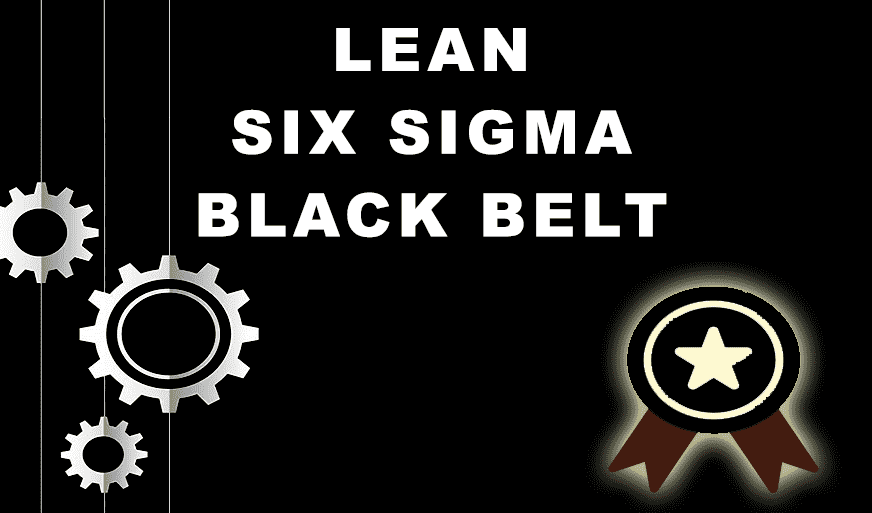Introduction to Lean Manufacturing- Definitions, Framework, and More
-
 By Niharika Chaurasia
By Niharika Chaurasia - Published on Nov 15 2023

Table of Contents
Introduction to Lean Manufacturing
In today's ever-evolving and fiercely competitive business landscape, companies are perpetually in pursuit of streamlined operations, waste reduction, and heightened efficiency. They seek methodologies that can offer the key to achieving these objectives while maintaining the highest standards of product quality.
Lean Manufacturing, a paradigm born out of Toyota's pioneering efforts in the 1950s, has emerged as an exceptionally effective solution for meeting these challenges. This comprehensive guide delves into the core principles of Lean Manufacturing, presenting a clear definition of this transformative approach and illuminating its structured framework.
We will explore the five fundamental Lean Manufacturing principles that lay the foundation for its success and analyze how this methodology stands in stark contrast to traditional manufacturing practices. Furthermore, we'll examine the potential advantages that come with synergizing Lean Manufacturing with Six Sigma methodologies, giving you valuable insights into a powerful combination for operational excellence.
Explore this article to gain a profound understanding of Lean Manufacturing, which has the potential to revolutionize your organization's efficiency and competitiveness in the modern business world.
Definition of Lean Manufacturing
Lean manufacturing, often referred to as lean production or the Toyota Production System (TPS), is a smart way of making things. Lean manufacturing is about working smart and not wasting anything. Back in the 1950s, Toyota started this concept, and it means they were really good at making cars without wasting time, materials, or money. Today, many companies follow these ideas to improve their work.
One cool thing about lean manufacturing is that it's like a magic wand for businesses. It helps them do things faster, cheaper, and better. In fact, a study by the Aberdeen Group found that companies that use lean manufacturing practices reduce their production costs by an average of 25%. That's a big deal!
Lean Manufacturing Framework
This framework is like a map for organizations aiming to make their operations smoother, cut waste, and boost efficiency. In this part, we'll explore the main parts of the lean manufacturing framework, showing you how it can make a big difference in your manufacturing.
Explore this section to uncover the essential building blocks of lean manufacturing:

The 5 Lean Manufacturing Principles
Lean manufacturing is anchored by five foundational principles, each of which contributes to its overarching goal of waste reduction and value maximization. These principles serve as the core tenets that organizations follow to create a culture of continuous improvement. Let's examine these principles, along with real-world examples and statistics that highlight their impact.
Value: Adding Customer-Centricity to Manufacturing
In lean manufacturing, value is not an abstract concept; it's defined from the customer's perspective. Any process or activity that fails to enhance the product's value is deemed wasteful. This section will illustrate how this principle shapes lean manufacturing, focusing on the importance of aligning production with customer desires.
Example: Toyota, a pioneer of lean manufacturing, consistently seeks customer feedback to tailor its products according to customer preferences, ensuring that each feature and component adds value.
Value Stream: Charting the Course for Efficiency
Value stream mapping is a crucial tool for visualising and analysing the entire production process. By identifying bottlenecks and waste hotspots, organisations can optimise their production flow. This section will explain the importance of value stream mapping in lean manufacturing.
Example: By employing value stream mapping, a semiconductor manufacturer identified a bottleneck in its production process and reduced processing times by 30%, resulting in significant cost savings.
Flow: Ensuring Smooth and Continuous Operations
The lean principle of flow emphasises creating a continuous and seamless production process. This involves reducing batch sizes, eliminating unnecessary delays, and minimising disruptions. We will discuss how achieving flow in production enhances efficiency and quality.
Example: A food processing plant streamlined its production by adopting lean manufacturing principles, reducing batch sizes, and implementing just-in-time production. This resulted in a 20% increase in productivity.
Pull: Meeting Customer Demand with Precision
Pull production is at the heart of lean manufacturing. It emphasises producing based on customer demand rather than pushing products into the market. This section will explain the significance of pull production in preventing overproduction and excess inventory.
Example: An automobile manufacturer embraced pull production, ensuring that vehicles were manufactured in response to customer orders. This resulted in a 15% reduction in inventory costs.
Perfection: The Unceasing Pursuit of Excellence
The pursuit of perfection is a relentless journey in lean manufacturing. It involves continuously seeking ways to improve processes, eliminate waste, and enhance efficiency. This section will emphasise the significance of a commitment to perfection for lean organisations.
Example: A pharmaceutical company applied lean manufacturing principles to its research and development process, resulting in a 40% reduction in drug development time, leading to significant cost savings and faster time-to-market.
Explore this section to gain a profound understanding of how these principles can transform your manufacturing operations and lead to remarkable improvements in efficiency and product quality.
Lean Manufacturing vs. Traditional Manufacturing
To understand the merits of lean manufacturing, let's contrast it with traditional production methods. In the traditional approach, products were mass-produced in large quantities, leading to substantial stockpiles and extended production timelines.
The cost-reduction strategy was to produce a significant volume of items. But with lean manufacturing, they do things differently. They make smaller amounts of things, don't have big piles of stuff lying around, and try to make each step in the process work better. This makes things faster, cheaper, and of better quality.
Here's a comparison between lean manufacturing and Traditional manufacturing.

Upgrade with Lean Six Sigma Courses
In the pursuit of lean manufacturing excellence, organisations often seek to supercharge their efforts by integrating lean principles with Six Sigma methodologies. This dynamic combination, known as Lean Six Sigma, harnesses Lean's waste reduction focus and Six Sigma's statistical and data-driven problem-solving techniques to achieve remarkable results.
Sprintzeal, a leading provider of professional training and certification courses, offers a range of online and in-person Lean Six Sigma courses that can empower you with the skills and knowledge needed to excel in lean manufacturing and process improvement.
Why Choose Sprintzeal's Lean Six Sigma Courses?
- Comprehensive Training: Our courses cover a wide spectrum of topics, including lean tools and techniques, process improvement methodologies, and in-depth statistical analysis. You'll gain a holistic understanding of lean manufacturing and lean Six Sigma principles.
- Experienced Instructors: Learn from industry experts with practical experience in Lean and Six Sigma. Our instructors are dedicated to helping you achieve success in your lean manufacturing journey.
- Flexible Learning Options: We offer both online and in-person courses, allowing you to choose the mode of learning that suits your schedule and preferences.
- Certification: Upon successful completion of our Lean Six Sigma courses, you'll earn a globally recognised certification, demonstrating your expertise in lean manufacturing and process improvement.
- Career Advancement: By acquiring Lean Six Sigma skills, you'll enhance your career prospects, making you a valuable asset to any organisation aiming for operational excellence.
Unlock the full potential of lean manufacturing with Sprintzeal's Lean Six Sigma courses. Upgrade your skills today and drive your organisation's success to new heights.
Explore Sprintzeal's Lean Six Sigma Courses
Conclusion
Lean manufacturing has truly transformed the manufacturing industry. It's all about cutting waste, creating value, and pursuing constant improvement. By embracing these principles, organisations can boost their competitiveness, trim costs, and stay adaptable in an ever-changing market.
Ready to enhance your operations and competitiveness? Reach out to Sprintzeal today to discover our comprehensive Lean Six Sigma training programmes.
Contact Sprintzeal and start your journey towards a more efficient and competitive future with Lean Six Sigma!
FAQ
What is leanmanufacturing? Leanmanufacturingg is a production philosophy and set of principles that aim to eliminate waste andmaximisee value throughout the manufacturing process.
What are the fiveleannmanufacturingg principles?
The five lean manufacturing principles are value, value stream, flow, pull, and perfection.
What is the introductionof thef lean approach?
The introduction of the lean approach involves focusing on waste reduction, value creation, and continuous improvement in the manufacturing process.
What does Six Sigma mean?
Six Sigma is a data-driven and statistical methodology used to improve processes, reduce defects, and enhance the quality of products and services.
Why is lean important?
Lean is important because it helps organisations reduce costs, enhance competitiveness, and meet market demands by eliminating waste, creating value, and focusing on continuous improvement in their operations.
Subscribe to our Newsletters
Popular Programs
Trending Posts
Compliance Manager Interview Questions and Answers 2024
Last updated on Nov 3 2023
Top 30 Quality Analyst Interview Questions and Answers 2025
Last updated on Feb 20 2025
Service Delivery Manager Interview Questions and Answers (With Examples)
Last updated on Oct 31 2024
The Ultimate Guide to ISO 9001: Boosting Quality and Certification Success
Last updated on Jul 24 2024
What Is Lean Management?
Last updated on Apr 20 2023
A Deep Dive into Lean Continuous Improvement Tools
Last updated on Dec 26 2023
Categories
- Agile Management 54
- AI and Machine Learning 42
- Big Data 53
- Business Management 51
- Cloud Computing 44
- Digital Marketing 56
- Information Security 8
- IT Hardware and Networking 17
- IT Security 103
- IT Service Management 29
- Leadership and Management 1
- Microsoft Program 2
- Other 43
- Programming Language 31
- Project Management 162
- Quality Management 75
- Risk Management 8
- Workplace Skill Building 2
Trending Now
Top Career benefits of Lean Six Sigma Green Belt
ArticleLean methodology, Six Sigma methodology and Lean Six Sigma Explained
ArticleSix Sigma Black Belt Certification – Value and Career Benefits in 2024
ArticlePareto Chart in Six Sigma - Explained
ArticleQuality Management Interview Questions 2024
ArticleSix Sigma Certification Guide - A Professional's Guide
ArticleSix Sigma Yellow Belt Certification - Six Sigma for Beginners
ArticleQuality Control Explained – Six Sigma
ArticleTotal Quality Management - A Complete Guide for Beginners
ArticleQuality Assurance in Six Sigma Explained
ArticleQuality Assurance vs Quality Control
ArticleSix Sigma Certification – Everything you Need to Know About Getting Certified
ArticleLean Six Sigma on Resume for Rewarding Career Benefits
ArticleQuality Manager Interview Questions and Answers for 2025
ebookService Delivery Manager Interview Questions and Answers (With Examples)
ArticleSix Sigma Interview Questions and Answers 2024
ArticleHow to become a Quality Analyst
ArticleA Supply Chain Management Guide to Mastering Logistics End to End
ArticleSenior Quality Manager Interview Questions and Answers 2024
ArticleTop 30 Quality Analyst Interview Questions and Answers 2025
ArticleFinancial Analyst Interview Questions and Answers 2024
ArticleRisk Manager Interview Questions and Answers 2024
ArticleCompliance Manager Interview Questions and Answers 2024
ArticleOperation Manager Interview Questions and Answers
Article5 Lean Continuous Improvement Principles to Supercharge Your Operations
ArticleHow to Become a Quality Manager - Career, Job Scope and Certifications
ArticleEssential Components of a Quality Management System
ArticleSix Sigma Certifications - Reasons Why you Should Get Them
ArticleTop Qualities of a Good Manager and a Leader
ArticleLearn about Statistical Process Control (SPC) and its top applications
ArticleCost of Poor Quality - A Detailed Guide
ArticleImplementing 5S Methodology for Better Work Efficiency
ArticleWhat Is Lean Management?
ArticleBest Six Sigma Books in 2024
ArticleLeadership vs Management - The Ultimate Guide
ArticleQuality Assurance Plan - Six Steps To Quality Assurance Plan
ArticleOperational Planning Creation, Key Elements and its Benefits
ArticleA Complete Guide to Product Life Cycle Stages 2025
ArticleSix Sigma tools for DMAIC Phases
ArticleWhat Is Lean Manufacturing?- An Overview
ArticleThe Lean Continuous Improvement Model: A Comprehensive Guide
ArticleDMAIC vs. DMADV: Key Differences and Choosing the Right Six Sigma Methodology
ArticleA Deep Dive into the Power of Lean Continuous Improvement Process
ArticleLean Continuous Improvement Methods for Business Excellence
ArticleUnderstanding the Key Principles of Lean Manufacturing
ArticleSecret to Unlock Organizational Excellence: Stages of Continuous Improvement
ArticleLean Continuous Improvement: A Detailed Guide to Mastering Organizational Quality
ArticleLean Waste Management: The Ultimate Guide 2023
ArticleA Deep Dive into Lean Continuous Improvement Tools
Article8 Wastes of Lean - Strategies for Identification and Elimination
ArticleThe Ultimate Guide to Lean Manufacturing
ArticleUnderstanding Lean Manufacturing's Pros and Cons
ArticleLean Waste Reduction Strategies: Boost Efficiency and Cut Costs
ArticleTop 10 Lean Manufacturing Tools for Optimal Productivity
ArticleBeyond the Basics: Benefits of Lean Continuous Improvement
ArticleWhat are Quality Standards? | A Guide to ISO Standards
Article7 Important Types of Quality Management System
ArticleA Comprehensive Guide to Quality Management Systems
ArticleISO 9001 Standard: Benefits and Certification
ArticleBenefits of QMS Certification for Your Business
ArticleStep-by-Step Implementation Guide to ISO 9001
ArticleThe Ultimate Guide to ISO 9001: Boosting Quality and Certification Success
ArticleQuality Management System – QSM Approaches and Methodologies
ArticleHow to Effectively Implement a Robust Quality Management System?
ArticleExplaining QMS Documentation Structure: Benefits and Best Practices
ArticleWho Needs ISO 9001 Certification and Why?
ArticleKey Elements of ISO 9001:2015 Quality Management System
ArticleOvercoming Common Challenges in ISO 9001 Certification: Tips and Best Practices
ArticleBest Quality Management Tools
ArticleTotal Quality Management (TQM) vs. Six Sigma
ArticleQuality Manager Salary: What Freshers & Experts Earn in 2025
ArticleCertified Scrum Product Owner: Job Roles And Responsibilities
ArticleTips for Continuous Integration Testing: Streamlining QA
Article10 Quality Management Strategies Adopted by Top Managers
Article

















